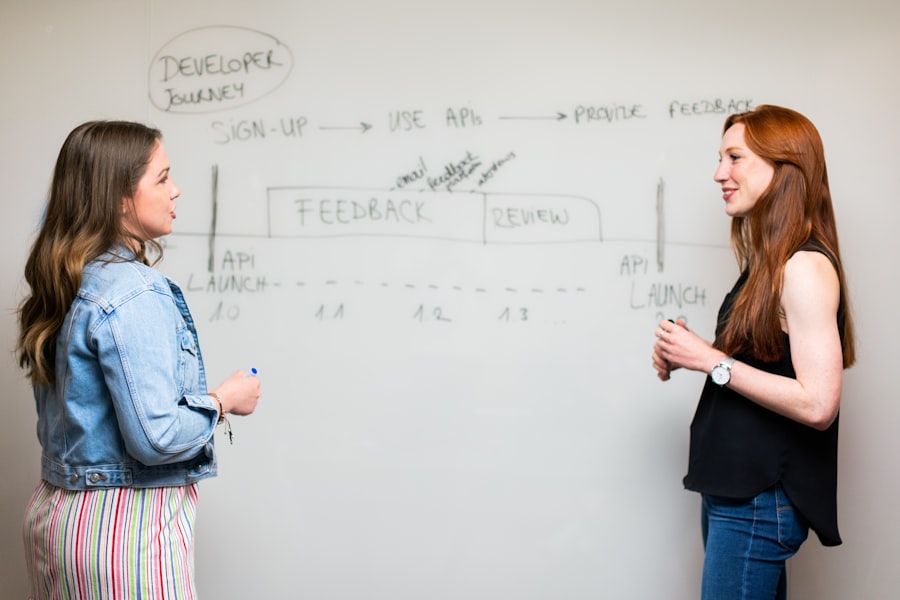Curriculum serves as the backbone of any educational system, providing a structured framework that guides both teaching and learning processes. It encompasses the knowledge, skills, and values that students are expected to acquire throughout their educational journey. A well-designed curriculum not only outlines what is to be taught but also establishes the methods and assessments that will be used to measure student understanding.
This foundational aspect of education is crucial because it directly influences the quality of instruction and the overall educational experience. Moreover, the importance of curriculum extends beyond mere content delivery; it plays a pivotal role in ensuring that educational standards are met. In many countries, national or state standards dictate the curriculum, ensuring a level of consistency and quality across different educational institutions.
This standardization is essential for maintaining equity in education, as it helps to ensure that all students, regardless of their background or location, have access to the same fundamental knowledge and skills. The curriculum thus acts as a unifying force in education, providing a common framework that educators can rely on to guide their teaching practices.
Key Takeaways
- Curriculum plays a crucial role in shaping the educational experience and outcomes for students.
- A well-designed curriculum can have a significant impact on student learning, cognitive development, and overall academic achievement.
- Curriculum helps to define educational goals and objectives, providing a roadmap for both teachers and students.
- The design and implementation of curriculum directly influence teaching methods and instructional strategies in the classroom.
- Adapting curriculum to meet the diverse needs of learners is essential for creating an inclusive and equitable educational environment.
The Impact of Curriculum on Student Learning and Development
The Impact on Learning Experience
Innovative approaches like project-based learning, embedded within the curriculum, encourage students to engage in hands-on activities that promote collaboration and real-world application of knowledge. This type of learning experience not only enhances retention but also fosters a deeper understanding of complex concepts.
Influencing Student Motivation and Engagement
The curriculum significantly influences student motivation and engagement.
Curricula that incorporate culturally relevant materials or connect academic content to students’ lives can significantly enhance engagement levels.
Improving Academic Outcomes and Sense of Belonging
By integrating local history or community issues into lessons, the curriculum can make subject matter more relatable and meaningful for students. This connection between curriculum content and students’ lived experiences can lead to improved academic outcomes and a greater sense of belonging within the school environment.
The Role of Curriculum in Shaping Educational Goals and Objectives

Curriculum plays a critical role in defining educational goals and objectives, serving as a roadmap for educators and students alike. Educational goals often reflect broader societal values and expectations, while specific objectives provide measurable outcomes that guide instruction. For instance, a school district may set a goal of improving literacy rates among elementary students, which would then inform the development of specific objectives related to reading comprehension, vocabulary acquisition, and fluency.
In this context, the curriculum acts as a bridge between overarching educational aspirations and practical classroom implementation. It translates abstract goals into concrete learning experiences that educators can facilitate. Additionally, the alignment of curriculum with educational goals ensures that all stakeholders—teachers, administrators, parents, and students—are working towards a common purpose.
This alignment is crucial for fostering accountability within the educational system, as it allows for the assessment of whether educational objectives are being met and where improvements may be necessary.
The Influence of Curriculum on Teaching and Instruction
The curriculum significantly influences teaching practices and instructional strategies employed by educators. It provides a framework within which teachers operate, guiding their lesson planning, resource selection, and assessment methods. For example, a curriculum that emphasizes inquiry-based learning will encourage teachers to adopt instructional strategies that promote exploration and questioning rather than rote memorization.
This shift in approach can lead to more dynamic classroom environments where students are active participants in their learning. Moreover, the curriculum can dictate the pace at which content is delivered. In a tightly structured curriculum, teachers may feel pressured to cover specific topics within a limited timeframe, potentially sacrificing depth for breadth.
Conversely, a more flexible curriculum allows educators to delve deeper into subjects that resonate with their students or require additional time for mastery. This flexibility can be particularly beneficial in diverse classrooms where students may have varying levels of prior knowledge or different learning styles.
Adapting Curriculum to Meet the Needs of Diverse Learners
In today’s classrooms, diversity is a hallmark of the student population, encompassing variations in culture, language, ability, and socioeconomic status. As such, adapting the curriculum to meet the needs of diverse learners is not just beneficial; it is essential for fostering an inclusive educational environment. Differentiated instruction is one approach that educators can employ to tailor their teaching methods and curricular materials to accommodate varying learning styles and abilities.
For instance, a teacher might modify assignments by providing multiple options for students to demonstrate their understanding—such as through written reports, presentations, or creative projects—allowing each student to engage with the material in a way that aligns with their strengths. Additionally, incorporating Universal Design for Learning (UDL) principles into the curriculum can help ensure that all students have equal opportunities to succeed. UDL emphasizes flexibility in how information is presented, how students engage with content, and how they express what they have learned.
By embracing these strategies, educators can create a more equitable learning environment that recognizes and values the unique contributions of each student.
The Future of Curriculum in Education: Trends and Innovations

Enhancing Learning Experiences with Technology
For instance, online simulations in science classes allow students to conduct virtual experiments that would be impossible or impractical in a traditional classroom setting. This approach not only enhances student engagement but also provides a more immersive and interactive learning experience.
Recognizing that emotional intelligence is as crucial as academic achievement, many educational institutions are incorporating SEL frameworks into their curricula to help students develop skills such as empathy, resilience, and self-regulation. This holistic approach acknowledges that education extends beyond cognitive development; it encompasses the emotional well-being of students as well.
Interdisciplinary Approaches to Curriculum Design
There is a growing focus on interdisciplinary approaches to curriculum design. By breaking down traditional subject silos and encouraging connections between disciplines, educators can create more relevant and engaging learning experiences for students. For instance, integrating science with art can lead to innovative projects that explore environmental issues through creative expression. This interdisciplinary approach not only enriches student learning but also prepares them for real-world challenges that often require collaborative problem-solving across various fields.
The Vital Role of Curriculum in Education is crucial for shaping the future of students and preparing them for success in their careers. Understanding Sociological Perspectives is also important in education as it helps educators create a more inclusive and diverse curriculum that reflects the needs and experiences of all students. This article explores the different sociological perspectives that can be applied to education, providing valuable insights for educators looking to create a more equitable learning environment. Read more here.
FAQs
What is curriculum in education?
Curriculum in education refers to the set of courses and content taught in a particular program or school. It includes the goals, objectives, learning outcomes, and assessment methods for each course or subject.
What is the importance of curriculum in education?
Curriculum plays a vital role in education as it provides a framework for teaching and learning. It helps to ensure that students receive a well-rounded education, covering a wide range of subjects and skills necessary for their future success.
How does curriculum impact student learning?
The curriculum directly impacts student learning by shaping the content and methods of instruction. A well-designed curriculum can engage students, promote critical thinking, and provide opportunities for meaningful learning experiences.
What are the key components of a curriculum?
Key components of a curriculum include the scope and sequence of content, learning objectives, instructional materials, assessment methods, and alignment with educational standards and goals.
How does curriculum development take place?
Curriculum development involves the collaboration of educators, administrators, and other stakeholders to design and revise the curriculum. This process may include conducting needs assessments, setting learning goals, selecting instructional materials, and evaluating the effectiveness of the curriculum.






















+ There are no comments
Add yours